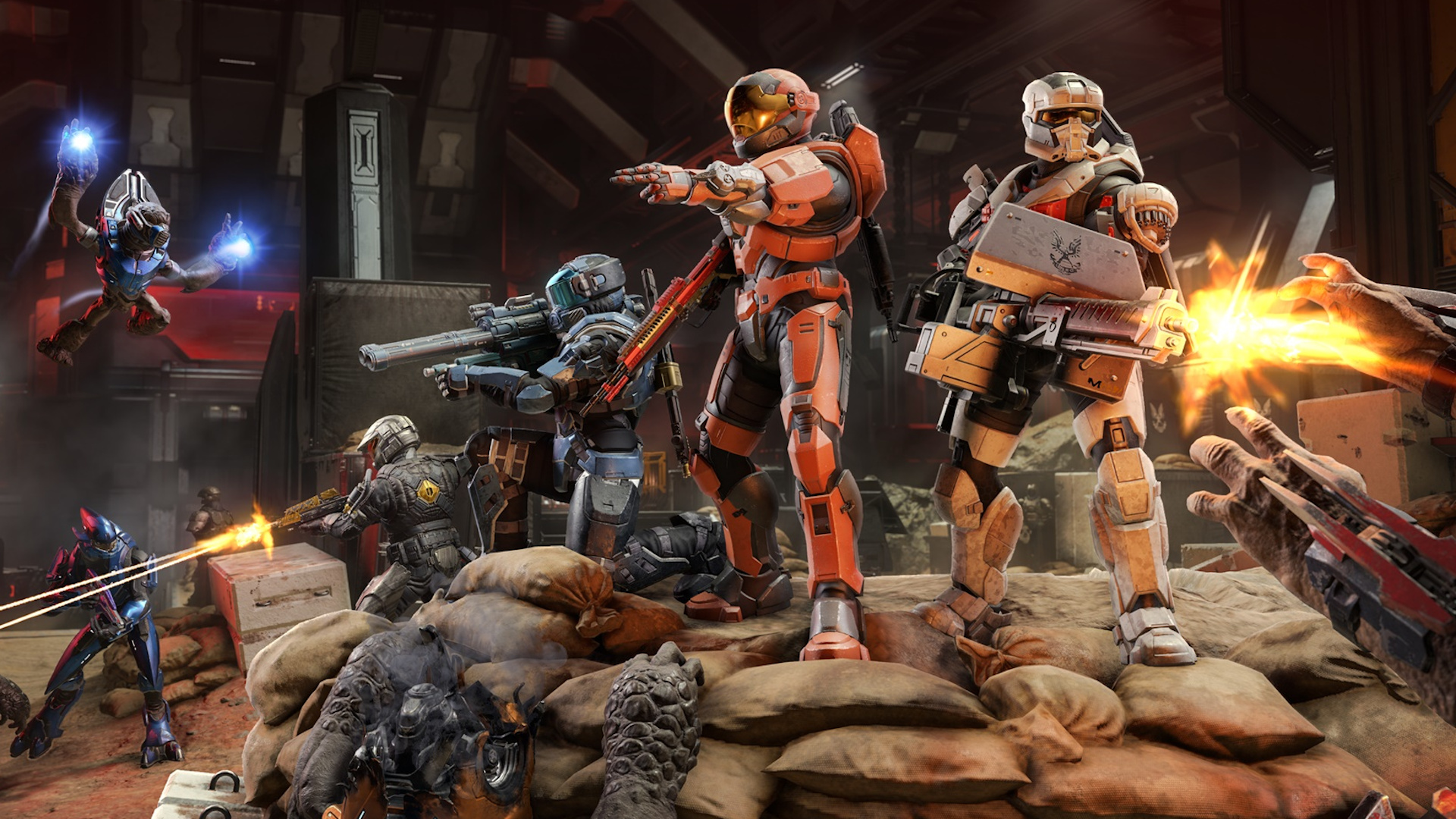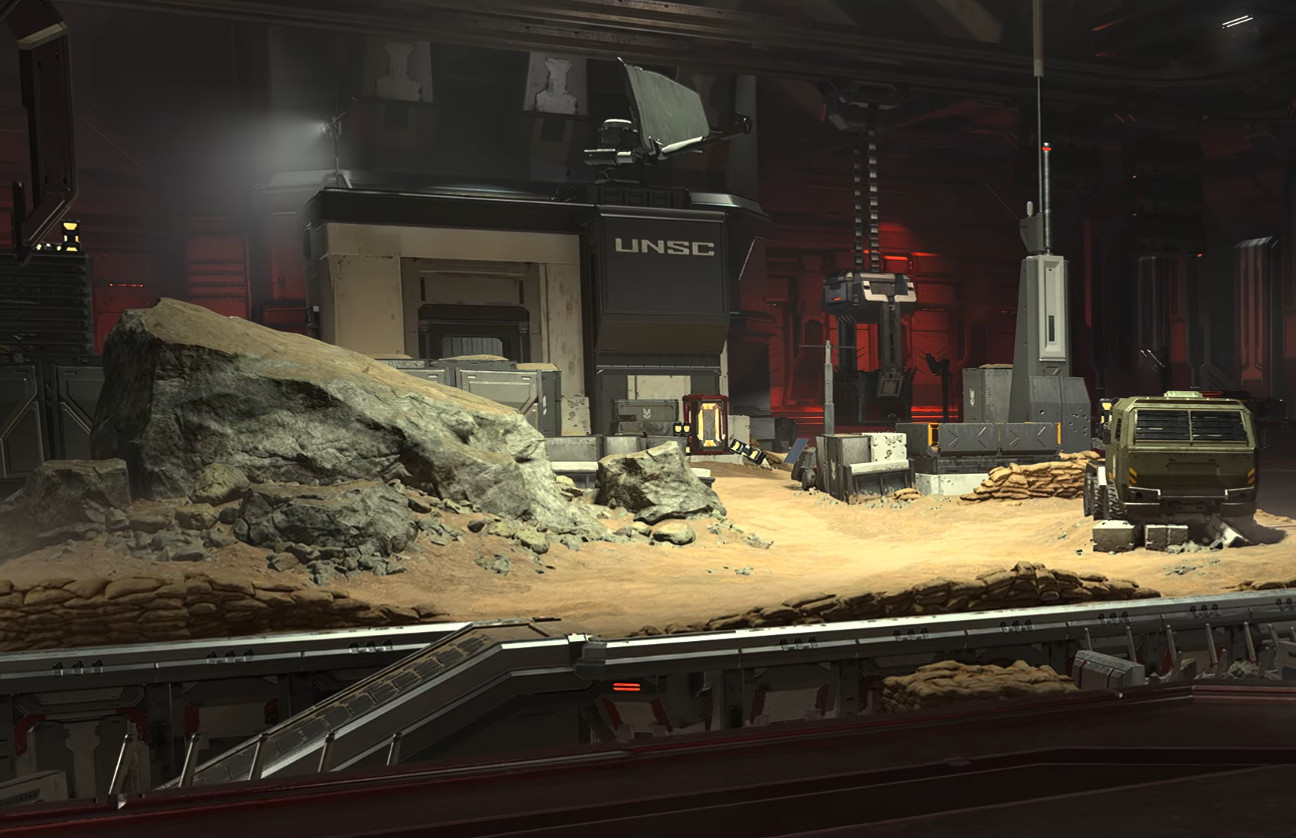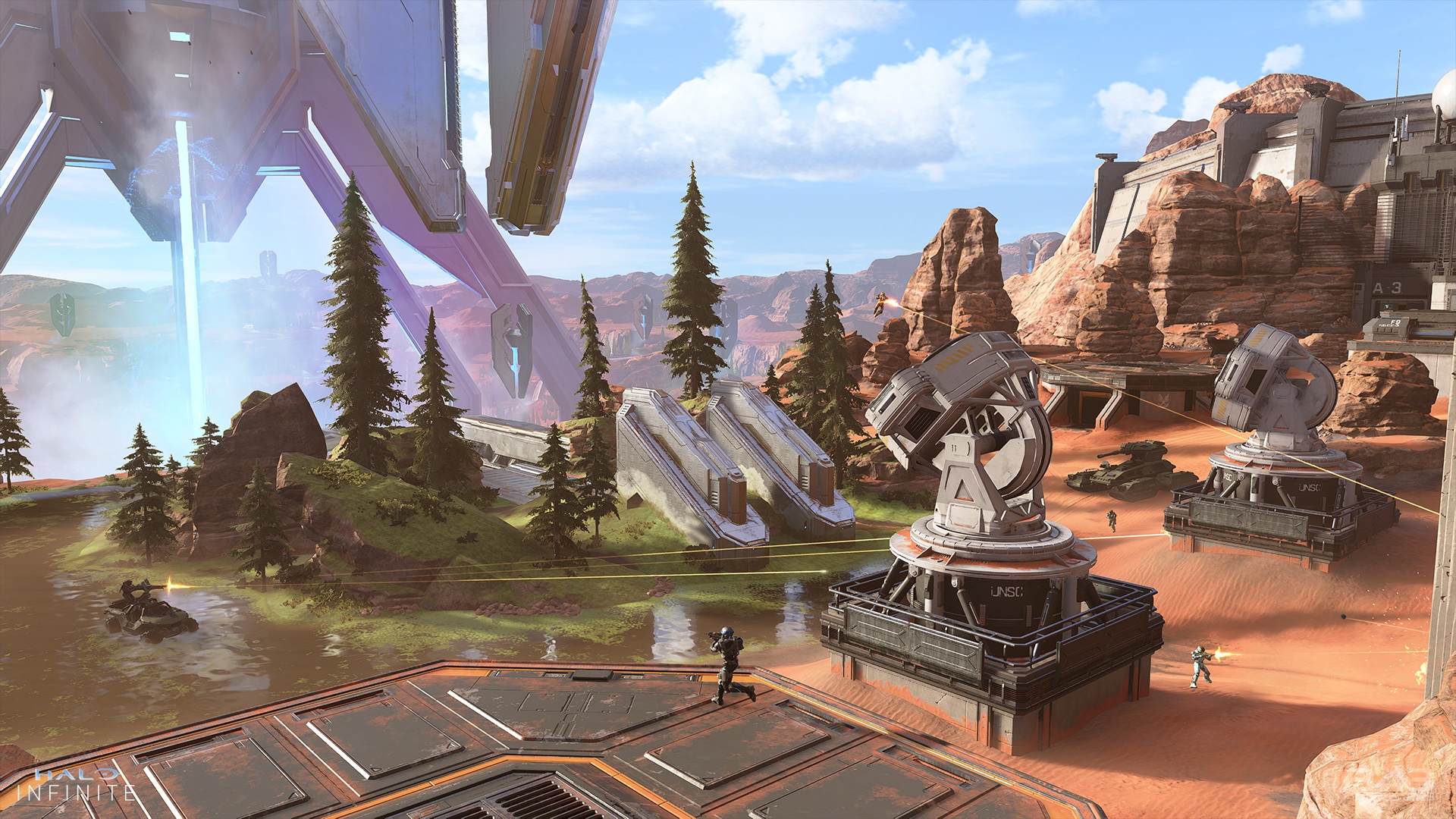Halo Infinite Firefight is the cherry on top of its best season yet
Halo is radiating mid-2000s FPS energy these days, and I'm eating it up.

We lost our way as a society when we stopped making wave-based co-op modes. "Horde mode" (as popularized by Gears of War) became the hot new thing in shooters of the late 2000s, spawning unique interpretations of PvE gauntlets in everything from Left 4 Dead and Call of Duty to Uncharted and even Mass Effect.
They all ruled in their own ways, but I have a soft spot for how Bungie did it. In Halo 3: ODST, it was called Firefight: a difficult, but rewarding horde mode that leveraged Bungie's unrivaled singleplayer sandbox in the best ways possible. The mode was so popular that fans celebrated its return in Halo Reach, then grew a chip on their shoulders when 343 Industries took the reins and Firefight skipped Halo 4 to make only a half-hearted appearance in Halo 5.
Halo Infinite is 343's chance to do the beloved co-op mode justice in 2023, and I like what I'm seeing so far.
Last month I played a few rounds of Firefight: King of the Hill, an objective-based variant of Firefight coming in a midseason update on December 5. Here's the TL;DR:
- Four players max
- Supports nine maps in matchmaking at launch: five existing multiplayer maps, three community-created, and one adapted from Campaign
- Hold and capture hills, capture five to win
- Firefight template will be available in Forge and Custom Games
- All 12 campaign skulls are there, but they only activate after deathless rounds
- Normal and Heroic playlists at launch, and Legendary to come

I played one round on the Big Team Battle map Oasis, and two on a new map adapted from a location late in the Infinite campaign: the House of Reckoning. 343 told me they chose the House of Reckoning, an indoor Banished facility with a simulated UNSC training facility at its center, because it kept hearing from players that "this would make a great Firefight map."
And so it does. The cover-dense, square-shaped battleground originally designed to make Master Chief break a sweat before a major boss fight feels just right with a group of four and looks fantastic. My first instinct in round one was to grapple up to the high ground and hunker down, but that's where the "King of the Hill" bit comes in: rounds center around a randomly chosen capture zone. At least one player has to be in the zone at all times to keep the Banished from capturing. This was a deliberate design choice, 343 said, to minimize the power of turtling in Firefight. You have to stay in the action to survive, but you also won't immediately lose if nobody's touching the hill for a few seconds.
I suppose the hill restriction is also a natural consequence of Halo Infinite's enhanced movement and its reuse of multiplayer maps in Firefight: there are high spots in Big Team Battle maps where the Banished could never reach you. The hill nips that problem in the bud, but thankfully, 343's Firefight module will also be available to tweak in Forge, meaning forgers could theoretically get a hill-less version of Firefight running pretty easily (they've already been making their own since campaign AI came to Forge in October).
The biggest gaming news, reviews and hardware deals
Keep up to date with the most important stories and the best deals, as picked by the PC Gamer team.

The constant capture zone didn't make it feel any less like Firefight to me, though. Our squad naturally fell into roles. In my Oasis match, one player became the designated hill holder while another focused on picking off elites with a DMR from afar. Meanwhile, I took the gunner seat in our singular Warthog. Yes, you only get one (at least on that map) and once it's gone, it's gone. It's a good thing the midseason update is also bringing a clutch new piece of equipment: the Repair Field. Similar to the Regenerator item in Halo 3, the Repair Field triggers an AOE healing aura that restores player health, enemy health, and repairs vehicles on the fly.
Knowing where the Repair Field spawned made all the difference between rounds as we'd seal up smoking wounds and unpop tires so our battle-worn SUV could live to drive another day. It was one of the longest relationships I've had with a Warthog before its inevitable demise, and its vulnerability made me appreciate its awesome power all the more. Scarcity is a big deal in Firefight, as precious supplies like ammo boxes and power weapons only replenish between rounds.

My brief Firefight demo was a fun reminder that resource management in shooters rocks.
My brief Firefight demo was a fun reminder that resource management in shooters rocks, and it's been a while since I've been challenged by scarcity. I can't remember the last time I had to scavenge for ammo in a multiplayer FPS—most of my favorite shooters give everyone unlimited ammo, or deep enough pockets that I don't live long enough to go empty. But if my gun runs dry and I have to improvise, there's no shooter I'd rather be playing than Halo. 343's deep weapon sandbox, like Bungie's before it, shines brightest with your back against the wall. At my darkest hour, the wimpy plasma pistol I love to ignore is my shield-draining best bud, and guns that underperform in a PvP context, like the plasma-fire-spitting Ravager, are top-tier drops against densely-packed AI.
There's nothing wildly unique about Infinite's take on Firefight, but if you can't tell, it's really hitting the spot. It's simple and effortlessly fun, but honestly, I'm more hopeful about what Firefight adds to the package of Halo Infinite. Season 5 is the first time I've been excited about how much stuff there is to do in Halo since Reach. I've clocked around 50 hours since October (oh dear), and most of that time was me hopping between playlists based on mood. Bearing down for sweaty arena games, cooling off with 8v8 Squad Battle, goofing around in Fiesta, perfecting a parkour map at 2am with twelve other randoms—Infinite is radiating mid-2000s FPS energy these days, and I'm eating it up.
Firefight is the cherry on top of Halo Infinite's streak of good vibes, and an excellent way to ring in the game's second anniversary. Give it a shot yourself on December 5.

Morgan has been writing for PC Gamer since 2018, first as a freelancer and currently as a staff writer. He has also appeared on Polygon, Kotaku, Fanbyte, and PCGamesN. Before freelancing, he spent most of high school and all of college writing at small gaming sites that didn't pay him. He's very happy to have a real job now. Morgan is a beat writer following the latest and greatest shooters and the communities that play them. He also writes general news, reviews, features, the occasional guide, and bad jokes in Slack. Twist his arm, and he'll even write about a boring strategy game. Please don't, though.

